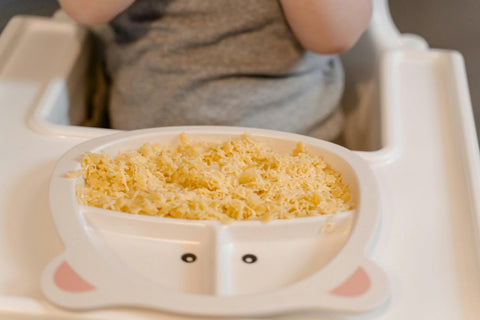Navigating your baby’s first year of life is a whirlwind of milestones, and one of the biggest is the transition from purées to more solid, family-style meals. 1-year-olds are moving from a diet where milk is the primary source of nutrition to one where solid food takes centre stage.
This new chapter can be both exciting and a little daunting for many parents. You may have questions about how to structure mealtimes, what to feed your child, and how to ensure they're getting a balanced diet. But this guide is here to help you confidently navigate your 1-year-old's feeding schedule with easy food ideas, portion size guides, and food prep tips.
1-Year-Old Baby Sample Feeding Schedule
As your baby turns one, milk, whether breast milk or formula, takes on a supporting role in their diet, while solid food becomes the primary source of energy and nutrients. This transition is crucial for ensuring your child receives a well-balanced diet to support their rapid growth and development.
A typical day for a 1-year-old generally consists of three main meals and two to three healthy snacks. This frequent feeding schedule is important because your little one’s stomach is still relatively small, so they need to eat often throughout the day to obtain the energy and nutrients they require.
1-year-olds may go for longer stretches between eating during nap time or if they are still nursing on demand. Plus, during periods of growth spurts, they may want to eat more often as their body demands extra fuel.
The key is to establish a routine while also remaining flexible and listening to your child's hunger and fullness cues. Remember, their appetite can fluctuate from day to day, and that's perfectly normal.
Here are sample schedules for a 1-year-old with easy food ideas to give you an idea of what a day might look like:
Sample Schedule 1: Early Riser
|
Time |
Meal |
Notes |
|
7:00 AM |
Wake |
Nursing session or bottle (4-6 oz milk) |
|
8:00 AM |
Breakfast |
Iron-fortified breakfast cereal, fruits, cow’s milk |
|
10:00 AM |
Morning Snack |
|
|
12:30 PM |
Lunch |
Pasta, cut-up cucumbers, fruits |
|
4:00 PM |
Afternoon Snack |
Yoghurt with cut-up fruit |
|
6:00 PM |
Dinner |
|
|
7:30 PM |
Bedtime |
Nursing session or bottle (4-6 oz milk) |

Sample Schedule 2: Mid-Morning Start
|
Time |
Meal |
Notes |
|
7:30 AM |
Wake |
Nursing session or bottle (4-6 oz milk) |
|
9:00 AM |
Breakfast |
Cooked egg, fruits, cow’s milk |
|
11:30 AM |
Morning Snack |
Chicken patties, fruits |
|
1:00 PM |
Lunch |
|
|
4:30 PM |
Afternoon Snack |
Banana pancakes, fruits |
|
6:30 PM |
Dinner |
|
|
8:00 PM |
Bedtime |
Nursing session or bottle (4-6 oz milk) |
Remember, these are just guides. Feel free to adjust times and meal compositions to fit your family's routine. The goal is consistency, which helps your toddler feel secure and better anticipate mealtimes.

Food Portion Size for a 1-Year-Old
"Toddler portions" are generally one-quarter to one-half of an adult's serving. However, when it comes to feeding a 1-year-old, it's important to remember that their portion size can vary significantly from one day to the next. This is all part of their normal development. If you're worried about whether your toddler is eating enough, the best approach is to offer small amounts first and let your child ask for more, following their hunger cues.
Here is a guide to typical portion sizes for different food groups. Remember to consult your child's paediatrician for the best advice.
Typical 1-Year-Old Portion Sizes (per meal)
|
Food Group |
Portion Size Examples |
|
Grains |
|
|
Protein |
|
|
Fruits |
|
|
Vegetables |
|
|
Dairy |
|
Food Prep Tips for a 1-Year-Old
Preparing meals for a 1-year-old can be a fun and creative process, but it’s important to continue focusing on food safety and age-appropriate preparation. Following a few simple food prep rules can help ensure every meal is a success.
Here are a few practical tips to make mealtime preparation a breeze:
1. Focus on Soft, Chewable Textures
At this age, a toddler's teeth are still coming in, so foods should be easily mashed with gums or cut into small, manageable pieces to prevent choking. Avoid hard, sticky, or round foods unless they have been properly modified. For example, grapes should always be quartered, and handmade sausages (without any added salt, sugar or preservatives) should be cut lengthwise into thin strips. This is vital for safety as toddlers explore new textures.
2. Incorporate Variety and Colour
Aside from offering a wide range of fruits, vegetables, grains, and proteins to ensure a diverse intake of nutrients, presenting a mix of colours, such as bright red strawberries, green peas, and orange carrots, can make mealtime more visually appealing and encourage them to eat. This also exposes toddlers to new tastes and textures, which helps prevent them from becoming picky eaters.
3. Explore Ready-Made, Nutritious Meals
For many parents, preparing every meal from scratch just isn't feasible. In those moments, considering ready-to-heat toddler meals is a fantastic option. Brands like Little Barn offer balanced nutrition, convenient portion sizes, and introduce new flavours without the cooking hassle.
You can order baby food online from such brands to ensure your child gets healthy, wholesome meals even on the most hectic days.
Embracing the shift to family meals with your 1-year-old is a journey of discovery and learning for both you and your little one. By understanding their changing nutritional needs, adopting a flexible feeding schedule, and following safe food preparation, you can ensure your child is well-fed and set them up for a lifetime of healthy eating habits.





Comments (0)
There are no comments for this article. Be the first one to leave a message!